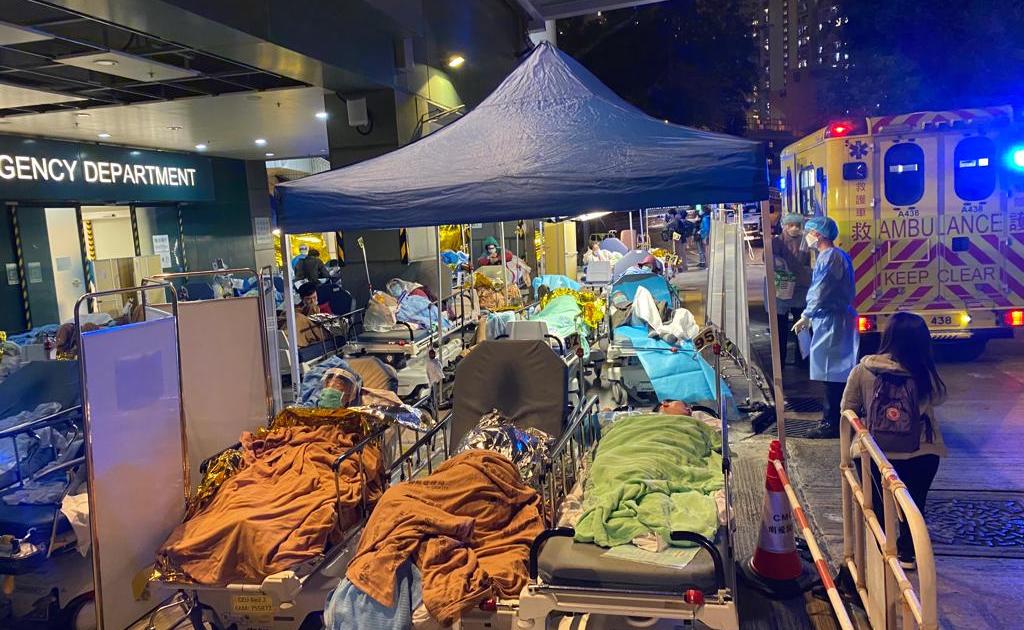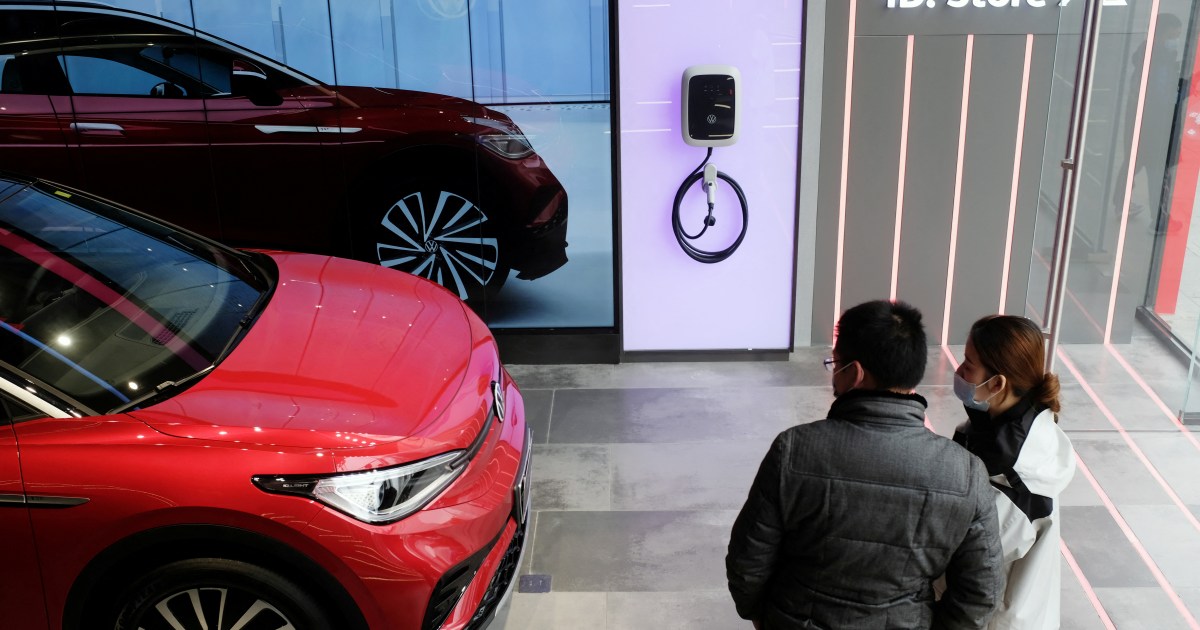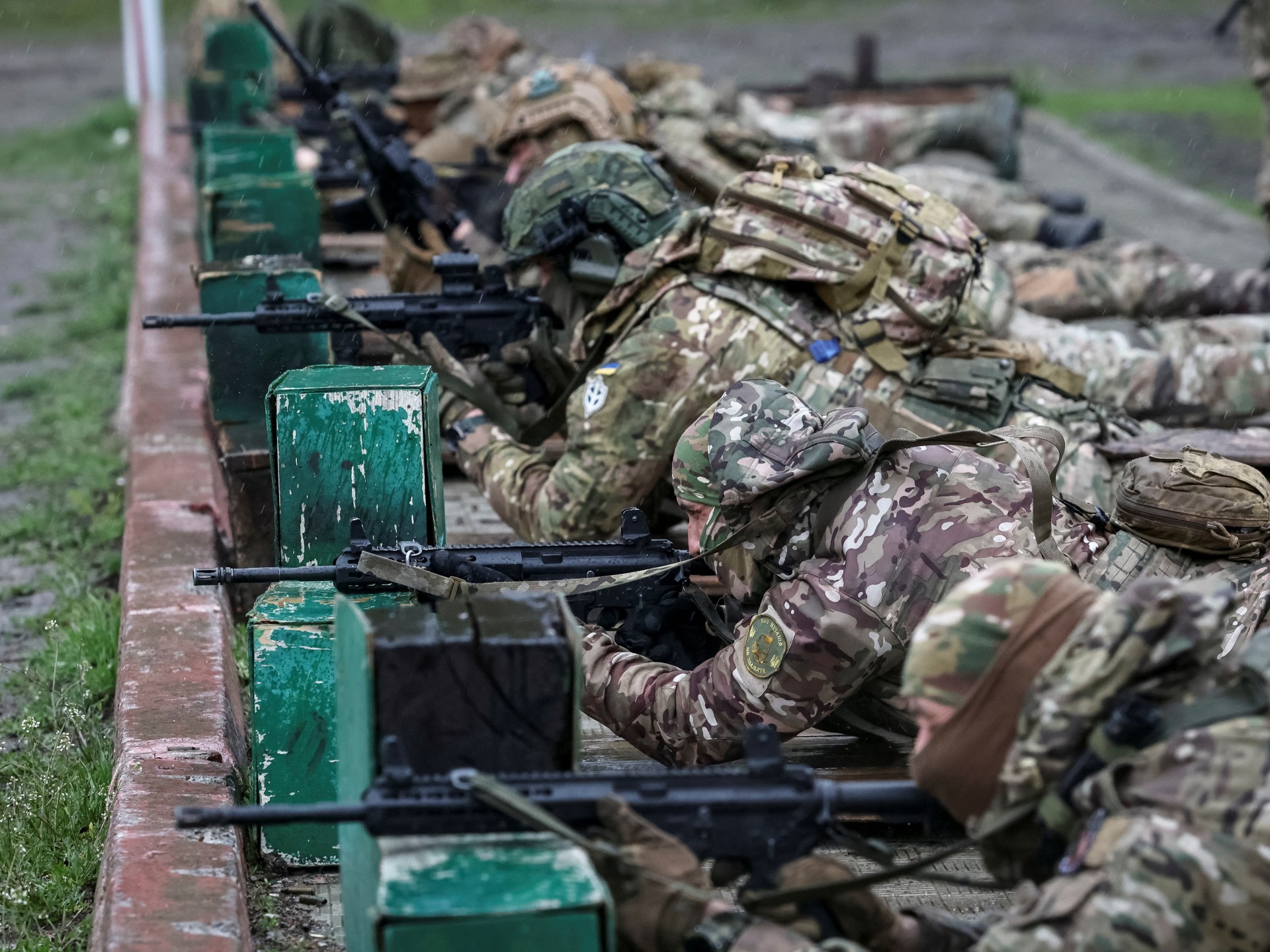Shades of the early pandemic as Omicron tests Hong Kong
Hong Kong, China – Bundled in a quilted jacket, covered with two thin blankets, Alice Yeung insisted she was not cold. Five hours before, she had tested positive for COVID-19. With no symptoms, but no vaccine, either, she was shipped from her nursing home to Caritas Medical Centre in the Kowloon region on Thursday.
There, she and 50 or so strangers waited outside the emergency room on one of winter’s coolest nights as medical staff inside drowned under a resurgent epidemic.
“No problem!” said the 69-year-old Yeung, with the practised optimism of the kindergarten aide she had once been.
Like tens of thousands of seniors, Yeung had ignored the government’s fitful efforts to vaccinate them for most of the last two years. Local newspapers carried reports that people had died after getting jabs, or suffered paralysis.
“Big headlines,” she said. With the government pushing vaccines harder in recent weeks, she had signed up to get her jab on February 25.
As night fell, Yeung and her companions curled under Mylar foil blankets that crinkled in the furious wind. There was no tea and no sign of dinner. The air dipped to 17C (63F), and the sky began to spit rain.
On Friday, with temperatures predicted to drop to nearly 10C (50F), hospital officials said they were making room inside, so patients like Yeung would not have to linger in the cold. Carrie Lam, the city’s chief executive, told reporters that keeping people outside for hours was “very inappropriate and unacceptable”.
“Either way,” Yeung said of the cold and the virus, “you’re going to die. God will get the last say.”.
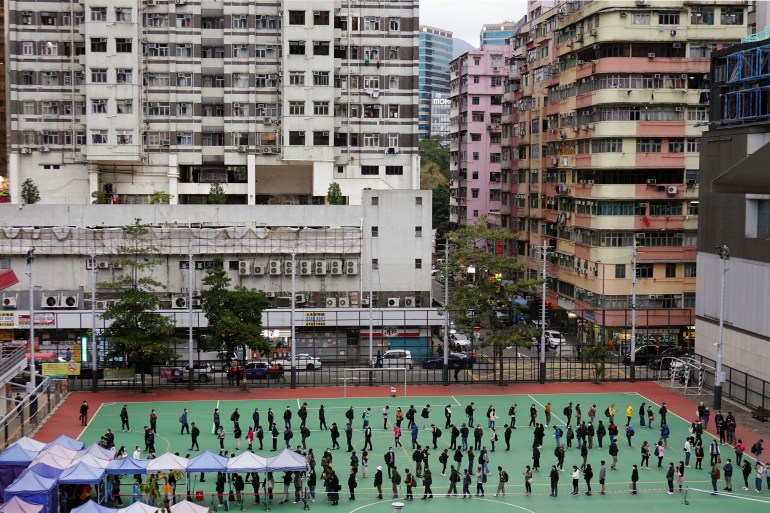 Labs in Hong Kong are struggling to keep up with the demand for testing as the Omicron variant sweeps the densely-populated city [Joyce Zhou/Reuters]
Labs in Hong Kong are struggling to keep up with the demand for testing as the Omicron variant sweeps the densely-populated city [Joyce Zhou/Reuters]Even as COVID-19 flooded the world, Hong Kong believed that its pandemic policies had kept the city safe.
Under pressure from the national government in Beijing, Hong Kong pursued a zero-tolerance plan that aimed to keep the virus at bay by keeping people apart. The city barred visitors, imposed the world’s longest and most stringent quarantines on travellers, and pursued aggressive contact tracing tactics with sudden lockdowns and mandatory tests. Those who tested positive were swiftly admitted to hospital, and their close contacts and household members were quarantined as well. Yielding two negative tests in quick succession was the only path to release.
For two years, this plan kept cases low but frustrations high. Vaccination rates were less than ideal among the general population and paltry among the elderly, a problem in a place where 1.27 million people, or roughly 18 percent of residents, are 65 and older.
The latest data shows about 40 percent of the population 70 and older has had at least one dose of the vaccine. Just 13 percent of that age group have had three shots.
‘So many patients’
After the Omicron variant of coronavirus swept much of the world, that it slipped through Hong Kong’s defences came as a surprise to few. The territory has recorded more than 6,300 cases in the last two weeks, including more than 3,620 new ones on Friday, and 10 deaths, mostly of elderly people.
Health officials acknowledged on Friday that they were days behind in processing throat and nasal swabs. Lam predicted on Friday that containment could take months and that officials were planning mandatory citywide testing, but not through lockdowns.
The coronavirus has coursed through housing estates and congested shopping strips with city officials able to wield few of the omnipotent measures employed by China’s authoritarian government, which locks down citizens at home, forces out the infected, and deploys patrols to ensure compliance.
In densely-populated Hong Kong, entire families live in flats of less than 28sq m (300sq ft), and there are no citizens on obedience patrol. Instead, Hong Kong officials have doubled down on preserving the territory as a COVID-19-free bubble, with more draconian measures under the mysterious moniker of “Dynamic Zero”, a term that not even Lam could explain to reporters.
The government blocked travellers from more countries and ordered bars, restaurants and gyms to close once again, throwing thousands out of work. All organised leisure is banned. Weary families, frustrated that they cannot easily travel, again work from home and endure more Zoom schooling. In Hong Kong, it seems like 2020 all over again.
 Hong Kong’s Chief Executive Carrie Lam is sticking with her policy of trying to stamp out COVID-19 even as cases have surged [Daniel Suen/AFP]
Hong Kong’s Chief Executive Carrie Lam is sticking with her policy of trying to stamp out COVID-19 even as cases have surged [Daniel Suen/AFP]Omicron, and its sister variant, Delta, have also churned through care homes for the elderly and disabled people. Residents there, along with thousands of other Hong Kongers, have followed the officials’ orders and queued at hospitals; it took mere days for every hospital bed to fill. By week’s end, more than 160 hospital personnel, including doctors and nurses, had tested positive.
Recently, a nursing colleague with a feverish child phoned Kaylee Lee, a paediatric nurse. The local emergency room said the wait would be 30 hours to be admitted. At home, the mother gave the child some aspirin, but the fever persisted and the child soon shook with chills. It took the family more than a day to get the youngster admitted to hospital.
“There are so many people, so many patients,” Lee said. “Even people who have COVID cannot go to the ward … We don’t have enough beds for them.” Another nursing colleague who took sick waited five days for admission.
‘Rational hesitancy’
Government workers have pushed for care home residents to get the jab, but many are reluctant.
Some residents have cognitive difficulties and cannot understand the implications, said Anna Chan, a social worker at a care home. Staff worry that if even a few residents suffer side effects, care workers will be overwhelmed.
Families share similar worries. With or without the vaccine, “they are not certain about the consequences. If they don’t get the vaccine, they are afraid [the home] may not allow the elderly to stay,” Chan said. Such pressures, she said, are pushing some people to agree to get the shot.
The government itself created this environment of reluctance, some critics have said.
With so few cases in Hong Kong, seniors showed a “rational hesitancy” to the vaccine, says Benjamin Cowling, an epidemiologist at the University of Hong Kong.
“When there was no COVID in the community and no expectation there would be COVID,” and seniors worried about side effects, “you can see why they’d be hesitant,” he said.
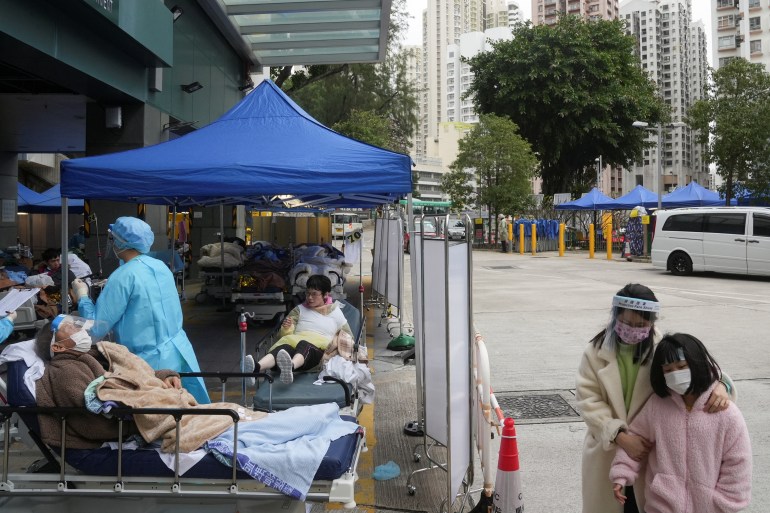 The demand has risen so quickly that hospitals were forced to set up temporary treatment centres outside despite it being Hong Kong’s cold season [Lam Yik/Reuters]
The demand has risen so quickly that hospitals were forced to set up temporary treatment centres outside despite it being Hong Kong’s cold season [Lam Yik/Reuters]That same dynamic has percolated through the general population. By pursuing a Zero COVID policy and convincing the city that they had controlled the spread, the government inadvertently promoted the idea that vaccines were unnecessary.
“It’s basically risky to pursue Zero COVID if you can’t be confident that you can deliver Zero COVID,” Cowling said.
Some of the city’s frailest and oldest are convinced that life at home offers the best protection.
With arthritis hobbling her body, 95-year-old Papi Mahboob relies on a grown son and caretakers to shop for her.
“Certain elderly people got sick. We read all that in the newspapers,” her son, John, said of the side effects. “Who can give me an accurate assessment of [the vaccine]? Even doctors are wrong here.”
His mother prefers to stay cocooned, her heater dialled to full blast.
“I’m at home, and I don’t meet anybody, so I think I am safe,” she said. As for the vaccine, “Is it necessary?”
Mihir Melwani, Jason Fong, and Andrew Yung contributed reporting.

